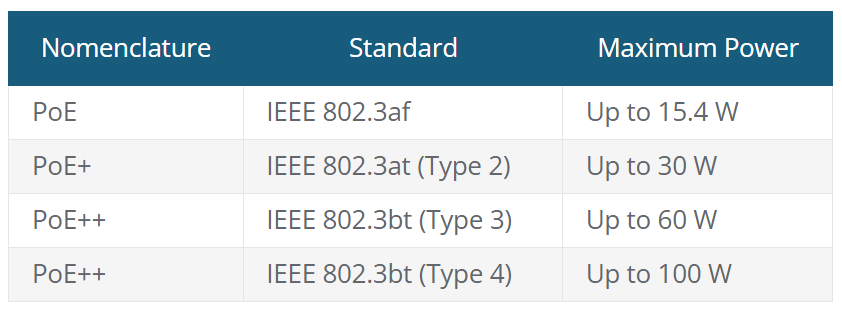This RJ system (Registered Jacks) have become ubiquitous in telecom and datacom applications since their early inception in the 1960s, which were categorized by the FCC in 1976 into the Registered Jack (RJ) system which standardizes the wiring patterns, signal specifics, and physical construction of the connector itself.

Common types
There are a wide variety of application-specific modular connectors. The most common types and their specifications are included here:
- RJ10 – a simple 4P4C rectangular connector for some telephone handsets
- RJ11 – most common 6P4C for wired telephones -can be a 6P2C, 6P4C, or 6P6C square connector for linking modems to phone lines
- RJ12 – same size as RJ11, but 6P6C
- DEC MMP/MMJ – smaller versions of the RJ11/12 connector, used in Digital Equipment Corporation equipment
- RJ13 – 6P4C, like the RJ12, but with a behind-the-line circuit
- RJ14 – 6P4C with two lines to connect two phones or modems
- RJ21 – modular connector with up to 50 contacts, used to connect up to 25 circuits in a large phone system
- RJ22 – similar in shape to RJ11, but 4P4C, typically used to connect handsets
- RJ25 – 6P6C, like the RJ11, but can connect three devices
- RJ45 – 8P8C or 8P10C, used for Ethernet LANs, WANs, WiFi router, servers, modems, smart tvs, computers, gaming consoles, industrial/factory automation, voice over internet protocol (VOIP) Systems, IoT, microcontrollers and robotics
- RJ48 – 8P8C, like RJ45, but for connection to shielded cables for T1 data lines
Modular connectors may have two, four, six, eight, or ten contact locations, although these positions are not always populated. For example, RJ11 phone connectors usually have four or six connections, while Ethernet (RJ45) connectors have eight (8P8C).
A standard naming scheme defines the connector’s wiring, so that a 6P2C connector has six positions and two contacts, while the 4P4C connector used on phone handset cords has four positions and four contacts. Although most contacts are used for signals, RJ connector contacts can be used to supply low-voltage AC or DC power.
Modular connectors can be specified with additional features such as:
- Shielding , to protect longer cable runs from electromagnetic (EMI) or radio frequency interference (RFI). Shielded RJ45 and RJ48 connectors, which continue the grounded connection of the shielding braid on the cable into the panel on which they are mounted, are widely available.
- Keying , certified RJ45 connectors use a tab on the connector to stop connectors from being inserted into a socket the wrong way. This feature is not normally present on a standard 8P8C connector. Color coding can be used to indicate which cables should be allowed to use particular network connection points.
- Mounting options, such as panel mount, board mount, through-hole, and surface-mount to PCBs are typically available. Modular jacks are offered with vertical or horizontal orientations.
- Display and indicator functions, such as colored status LEDs.
- High-reliability variants, which can include EMI/RFI shielding, special keying, protective boots, and robust parts that enable more insertion/removal cycles.
- Jacks With Magnetics, to improve EMI shielding and connection reliability in xBASE-T networks. These are wire-wound components in the jack that protect against transients and provide isolation, signal balancing, and impedance matching.
Magnetics can be incorporated into Ethernet designs in one of two ways. The first option is to add a magnetics module to the circuit board between the PHY (Ethernet implementation) chip and the connector jack. Alternatively, an RJ45 connector with integrated magnetics in the housing can be used.
Modules tend to be less expensive than integrated devices and offer better electrostatic discharge (ESD) protection. RJ45 connectors with integrated magnetics offer better EMI shielding and more reliable connections. Both strategies have advantages and disadvantages, but magnetics must be considered if you are adding wired Ethernet into a design because they are part of the Ethernet specification for 10/100/1000 Base-T networks.

Power Over Ethernet (PoE) and RJ45
An RJ45 is one type of an 8P8C connector. You can plug 8P8C connectors into RJ45 sockets, but you cannot do the reverse as true RJ45 connectors include a tab that only allows insertion of the device in one orientation to avoid an improper wiring connection.
Modular connectors like the RJ45 also offer the ability to relay both signals and deliver electrical power to the devices being connected. Power Over Ethernet (PoE) is a technique for supplying dc power to devices over the unused twisted pairs in Ethernet cables, eliminating the need for separate power wiring. PoE is governed by IEEE standard 802.3af and subsequent versions that have raised the power delivery. The various versions are:
The usage of PoE has grown rapidly due to cost savings based on no need for separate electrical cables, outlets, or installation fees. It also offers flexibility since devices do not need to be located near electric outlets. It is also designed to be safe, reliable, and scalable.
RJ45 Connector Pinouts
There are two RJ45 pinout standards, T568A and T568B. These define the organization of the eight wires in the connector and each has its own color scheme which must be followed. The T568A standard offers backward compatibility with older wiring. The T568B standard offers better signal isolation and noise protection. Either will work in an Ethernet network.

The type to use depends on your individual design needs and whether you are using a straight-through cable or a crossover cable. Straight-through (patch cable) has the same wiring standard at each end. Crossover cables are used to connect the same types of devices by having a T568A connection at one end and a T568B connection at the other end.
See also:
Crimpers, Applicators, Presses
Assorted Tool Kits
All modular options
Rj12 6P6C connectors
Modular - Flat Cable
Modular Cable Assemblies
Understanding and Specifying Modular Connectors
The Ultimate Guide to RJ45 Connectors
Pass Through RJ45 Connectors



